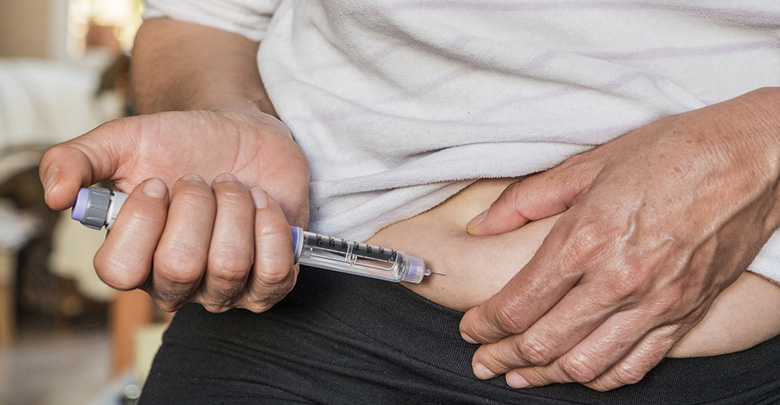Diabetic Ketoacidosis: When Can it Happen and How to Know if You’re at Risk
Do you know the circumstances that can cause Diabetic ketoacidosis, or DKA, and how to recognize you might be suffering from it?

Diabetic ketoacidosis, or DKA, is something most diabetics understand, at least on the surface. You’ve probably heard your doctor ask you once or twice or a hundred times if you have ketone strips at home and if you regularly use them when you are sick or experience blood sugars over 250mg/dL. If you have a newer pump, you have probably even seen a “check ketones” message pop up on the screen.
But how much do you really know about this serious complication? And, more importantly, do you know the different circumstances that can cause DKA and how to recognize if you might be suffering from it?
What is Diabetic Ketoacidosis?
Diabetic Ketoacidosis occurs when the body experiences a combination of high blood sugar, ketosis (the breakdown of fat), and acidosis (increased blood acidity due to depletion of the body’s alkali reserves in response to increased acidic ketones).
This process can occur very quickly if the amount of insulin in the body drops to near zero. This type of “absolute insulin deficiency” is a common cause of DKA in undiagnosed type 1 diabetics and in diabetics who have stopped following their insulin therapy regimen.
But, diabetic ketoacidosis can also occur in “relative insulin deficiency” when insulin is present in the body but high levels of counter-regulatory hormones cause increased insulin resistance. This kicks off a feedback loop of increasing blood sugar and ketosis that will lead to DKA if not treated immediately.
When Can You Suffer from Diabetic Ketoacidosis?
Understanding that DKA can still happen even if you are regularly taking your insulin is only the first step to preventing this deadly condition. By recognizing the different circumstances that most commonly lead to DKA, you’ll be better prepared to act to prevent the issue before it even begins.
Insufficient Insulin
One of the most common reasons for undiagnosed T1Ds to be admitted to the hospital is DKA. This makes sense considering that their body has stopped producing insulin but they aren’t yet using insulin injection therapy.
Unfortunately, many diagnosed diabetics still end up in the hospital each year due to DKA caused by a lack of insulin in the body. This happens for a number of reasons.
Diabetes is a labor-intensive disease that requires constant attention. All this hard work can lead to burnout, especially in long-time diabetics and in adolescents.
While taking a break from insulin therapy might provide some short-term mental relief, it can very quickly lead to ketoacidosis that is likely to be fatal without medical treatment.
If you feel like you are facing burnout or are struggling to keep up with your diabetes therapy, it is important to talk to someone who can help. That might be a community of other diabetics who understand the struggle like you’ll find here at Insulin Nation, or it might be a therapist or counselor who works with patients with long term illnesses.
Even if you don’t intentionally skip insulin doses, you can still end up with DKA due to insufficient insulin. This is possible if your insulin was stored improperly, expired, or if your insulin pump failed.
Insulin Pump Failure
Insulin pumps have had such a positive effect on diabetes management, that it might surprise you to learn that pump users are more at risk for DKA than patients on MDI. That’s because pumps rely wholly on short-acting insulins. If at any point that insulin delivery is interrupted, it only takes a couple of hours for the body to run out of insulin completely. Whereas someone on multiple injections is likely to have long-acting insulin circulating in their systems even if a bolus is missed.
Luckily, proper pump education and other technological advancements have reduced the risk of using pumps in the last few years. But it is still important to recognize the signs that your pump or site might be failing and act accordingly to prevent DKA.
If your blood sugar is higher than expected at any time, especially if it is over 250, you should check your urine for ketones.
If they’re present, it’s a good sign your site has gone bad, the insulin in your reservoir is bad, or your pump isn’t delivering insulin properly. Change your site and reservoir, and keep a close eye on your numbers and ketones. Don’t be afraid to call your pump manufacturer or doctor if needed.
If you aren’t in a position to check ketones right away, it might be a good idea to give your correction insulin via needle or pen instead of using your pump. If your blood sugars rise again after initially dropping, that’s a sign your pump or site might be the issue.
Infection
The number one cause of ketoacidosis in diabetics is an infection, with urinary tract infections and pneumonia being the most common.
Even if you maintain a normal insulin regimen and strict blood sugar control, the effect of counter-regulatory hormones triggered by the infection can cause ketones and eventual acidosis. These factors may even be present if your blood sugar is only slightly elevated, so it is vital to track your ketone output anytime you are experiencing an infection or illness like a cold or the flu.
If at any point you have ketoacidosis symptoms like abdominal pain, intense thirst, ketones in your urine, or signs of dehydration, you should call your doctor right away.
Gastrointestinal Illness
Gastrointestinal infections and illnesses can also lead to ketoacidosis. In addition to the effects of counter-regulatory hormones seen in other infections, stomach illnesses often lead to diarrhea and vomiting. This excessive loss of fluids dramatically increases your risk of dehydration, which in turn exacerbates your risk of DKA.
If you haven’t already, you should talk to your endocrinologist about what sick day procedures you should have in place for occasions like this. Your doctor is likely to recommend that you test your ketones frequently, have antidiarrheals and even anti-nausea suppositories on hand and increase your fluid intake. They should also discuss with you how to recognize when you need to go to the emergency room.
Stress
One of the many hormones responsible for increasing insulin resistance and glycogen in the body is cortisol.
While it’s unlikely that mental stress alone will lead to DKA, it is possible for long term stress or acute physical stress to increase your risk of DKA. This is especially true if you are already experiencing some diabetes burnout, not using insulin as often as you should be, or have an underlying infection.
Beyond DKA, cortisol and other stress hormones cause your heart to work harder, exacerbating the strain already put on your cardiac system by elevated blood sugars. As a diabetic, it’s extra important to take steps to reduce your stress.
No Diabetic is Immune to DKA
Even the most disciplined diabetic can still develop DKA, no matter how hard you work to avoid it. Being vigilant about checking for ketones when your blood sugar is elevated or while you’re sick or stressed, and then acting to reduce your ketoacidosis levels is the only way you can truly avoid falling victim to this common diabetes complication.







